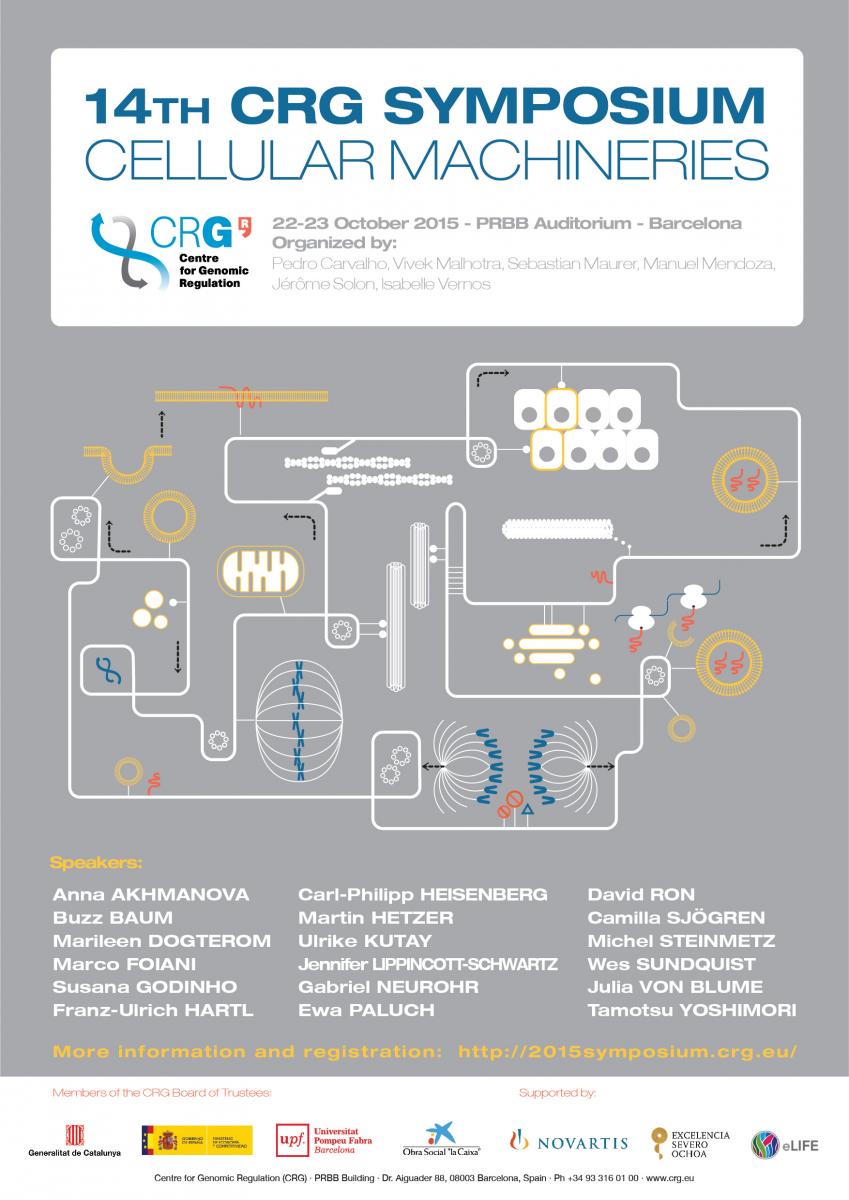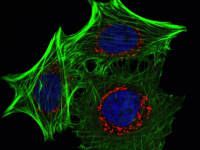 NEWS
NEWS
Understanding cellular machineries
PRESS RELEASE
UNDERSTANDING CELLULAR MACHINERIES
On 22nd and 23rd October the Centre for Genomic Regulation in Barcelona (Spain) will bring together world-leading researchers in life sciences to discuss the basic principles of how a cell works, and how this affects the function and physiology of tissues and organisms.
Under the title “Cellular Machineries” the CRG celebrates the 14th edition of its Annual Symposium.
It happens all the time in every cell of our body. Our cells work as tiny gears with precision 24/7. Cellular machineries are ensembles of intracellular players that, together, ensure and control the function of a cell and regulate the architecture of multicellular tissues. They ensure that lipids and proteins assemble into functional units and separate the cell into different compartments to segregate cellular functions. Cell compartmentation is mediated by positioning cellular organelles at discrete locations and targeting of specific proteins and lipids. For instance, proteins synthesis in a specific cellular locale requires trafficking of genetic information contained in mRNA, and all of these processes are mediated by vesicular and non-vesicular transport involving an extensive network of cytoskeletal elements. When cells are ready to divide, many cellular processes are reorganized to ensure the assembly of a mitotic spindle for an accurate partitioning of chromosomes. Specific quality-control mechanisms prevent delivery of damaged goods to the daughter cells; trafficking of proteins and lipids is controlled to ensure there is enough membrane to separate the daughter cells, and that the cell divides at the right time and place. While migrating or assembling into organized tissues, cells also have to relocate specific molecular machineries to modulate their adhesion and control their cytoskeletal architecture.
 Scientists have come a long way in our understanding of various parts of the cellular machineries and their impact on cellular behaviour and tissue organization, but there are still major challenges that remain unaddressed. The timing, the quantity, and the location of cellular events is placed under the control of numerous players and pathways. Teasing apart the mechanism of a cellular event whether it is protein, mRNA transport or vesicle transport; lipid and protein synthesis and their degradation; cytoskeleton assembly and organelle transport therefore requires teamwork.
Scientists have come a long way in our understanding of various parts of the cellular machineries and their impact on cellular behaviour and tissue organization, but there are still major challenges that remain unaddressed. The timing, the quantity, and the location of cellular events is placed under the control of numerous players and pathways. Teasing apart the mechanism of a cellular event whether it is protein, mRNA transport or vesicle transport; lipid and protein synthesis and their degradation; cytoskeleton assembly and organelle transport therefore requires teamwork.
The conference on cellular machineries brings together leaders in life sciences who use a variety of approaches to address the basic principles of how a cell works, and how this affects the function and physiology of tissues and whole organisms. Once again, Barcelona will be the main focus on life sciences research at the international level. The CRG annual symposium highlights the value of the biomedical scientific pool existing in Barcelona and strengthens networking and collaboration amongst local and international research groups.
More info about the Syposium:
Symposium website: http://2015symposium.crg.eu
Speakers: http://2015symposium.crg.es/speakers
Program: http://2015symposium.crg.eu/program/
Media contact: Laia Cendrós, Press Officer, Centre for Genomic Regulation (CRG) - Phone +34 93 316 02 37

